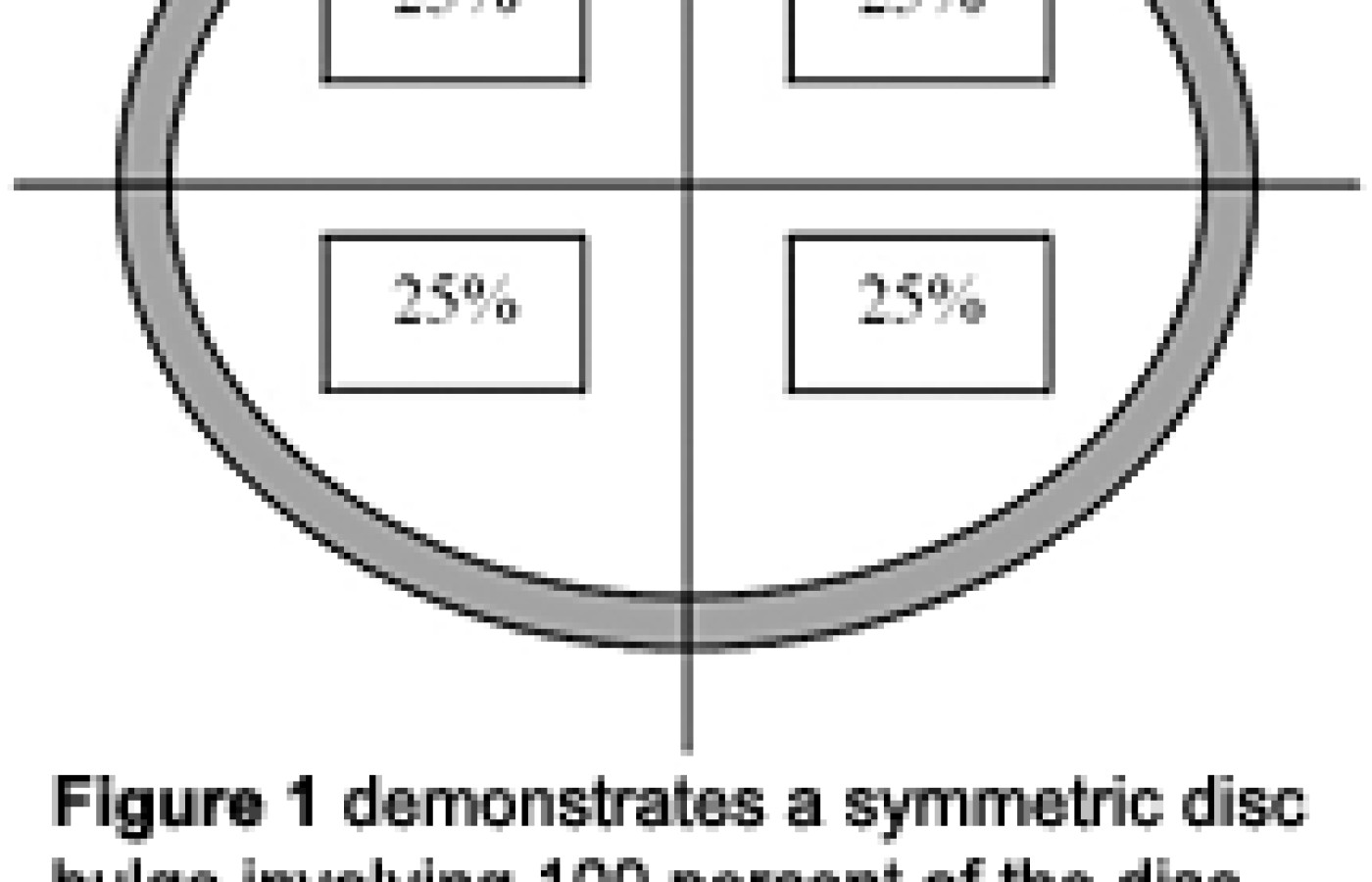It is estimated that 61% of patients with CTS avoid taking surgical options due to postoperative complications and costly surgical procedures. Chiropractic care offers a comprehensive and effective treatment for carpal tunnel syndrome, addressing the condition from multiple angles. Recent studies also have unveiled a game-changing adjunct to chiropractic treatments for CTS: nerve flossing.
A Synopsis of Nomenclature and Classification of Lumbar Disc Herniation
Over the years, there has been much confusion among various health care professionals as to the exact meaning of the terms disc bulge and herniation. Disc herniation, bulge, protrusion, extrusion, rupture, prolapse and a host of other terms have been used with a wide variety of meaning attached to them. It is important for health care practitioners from all specialties to use universal terminology; ultimately, this is in the best interest of the patient, as it allows for appropriate clinical decisions and/or treatment to be instituted.
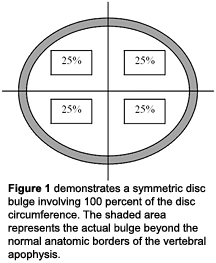
Universal terminology is of particular importance when radiologists are communicating imaging findings. Both the radiologist and the health care practitioner need to have the same understanding of the terminology so accurate communication and understanding can take place. Universal terminology also is important in the arena of research. Without this universal terminology, trying to compare the research literature can be very confusing, difficult and unrewarding.
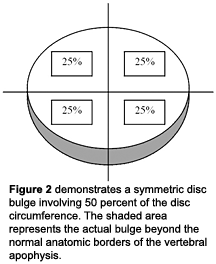
When developing this nomenclature, the task force followed a few guiding principles: First, the definitions would be based on anatomy and pathology. Second, the definitions would not imply external etiologies such as trauma. Third, the definitions would not imply a relationship to symptoms. Finally, the definitions would not be associated with or indicate any specific treatment was needed. These principals were needed to gain as much of a consensus as possible.
Disc Bulges
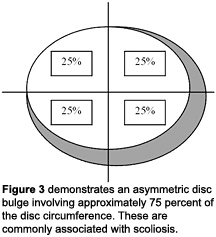
The terms symmetric and asymmetric also can be used to describe disc bulges. Asymmetric disc bulges commonly are seen in association with scoliosis (Figure 3). Remember, the task force that developed these definitions was trying to not imply an etiology. A disc bulge, therefore, may be caused by any of a variety of different things, including disc degeneration, response to loading or angular motion, or even a normal variant. Because of this, we need to keep in mind that when we see a disc bulge, we cannot assume it is a result of a pathologic or abnormal process.
Disc Herniations
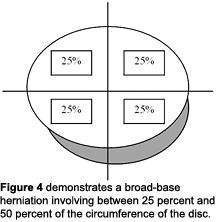
This can be further broken down into focal disc herniations and broad-based herniations. A focal disc herniation involves less than 25 percent of the disc circumference (Figure 5), while a broad-based herniation involves 25 percent to 50 percent of the circumference of the disc (Figure 4).
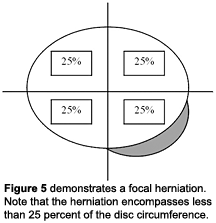
Based on the shape of a disc herniation, the terms protrusion and extrusion can be used instead of the term herniation. If it cannot be determined whether the herniation is a protrusion or extrusion, the term herniation is recommended. Even if the determination can be made, some prefer to stay with the term herniation. The definition of a protrusion, according to the task force, is "a herniated disc in which the greatest plane, in any direction, between the edges of the disc material beyond the disc space is less than the distance between the edges of the base, when measured in the same plane" (Figure 6). The definition of a extrusion, according to the task force, is "a herniated disc in which, in at least one plane, any one distance between the edges of the disc material beyond the disc space is greater than the distance between the edges of the base in the same plane; or when no continuity exists between the disc material beyond the disc space and that within the disc space" (Figure 7).
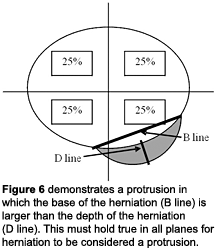
According to this definition, a sequestered disc is actually an extruded disc. A sequestered disc is a displacement of material beyond the confines of the disc that maintains no contact with the disc.
The term free fragment often is used synonymously with sequestration.
Herniations can be classified as being contained or uncontained. According to the task force, this refers to whether the disc materials are entirely restrained by intact outer annulus fibers (contained) or not (uncontained). This is currently not something that can be determined with imaging modalities such as MRI and CT, and therefore is not reportable on imaging studies. The herniation in relation to the posterior longitudinal ligament, however, is sometimes reportable on MRI.
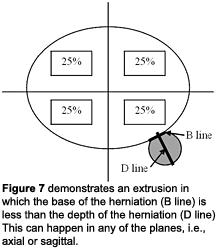
Disc herniations should be described by their location when possible. The location can be described in both the axial and sagittal plane. In the axial plane, the circumference of the disc has been divided into five zones: central (which can be divided into right and left central), subarticular (region of the lateral recess), foraminal, extraforaminal and the anterior zones. Keep in mind that these zones
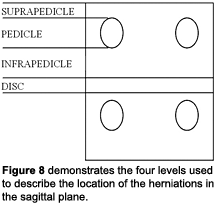
Another type of disc herniation, often not thought of as a disc herniation, is described as disc material relocated through the vertebral endplates into the vertebral body. This is referred to as an intravertebral herniation, better known as a Schmorl's node. This often can happen in the setting of major spinal fractures.
For a more comprehensive explanation of these terms and other disc issues, I refer you to the original paper (see reference below).
Reference
- Fardon DF, Milette PC: Nomenclature and classification of lumbar disc pathology. Recommendations of the Combined task forces of the North American Spine Society, American Society of Spine Radiology, and American Society of Neuroradiology. Spine 2001;26(5).
